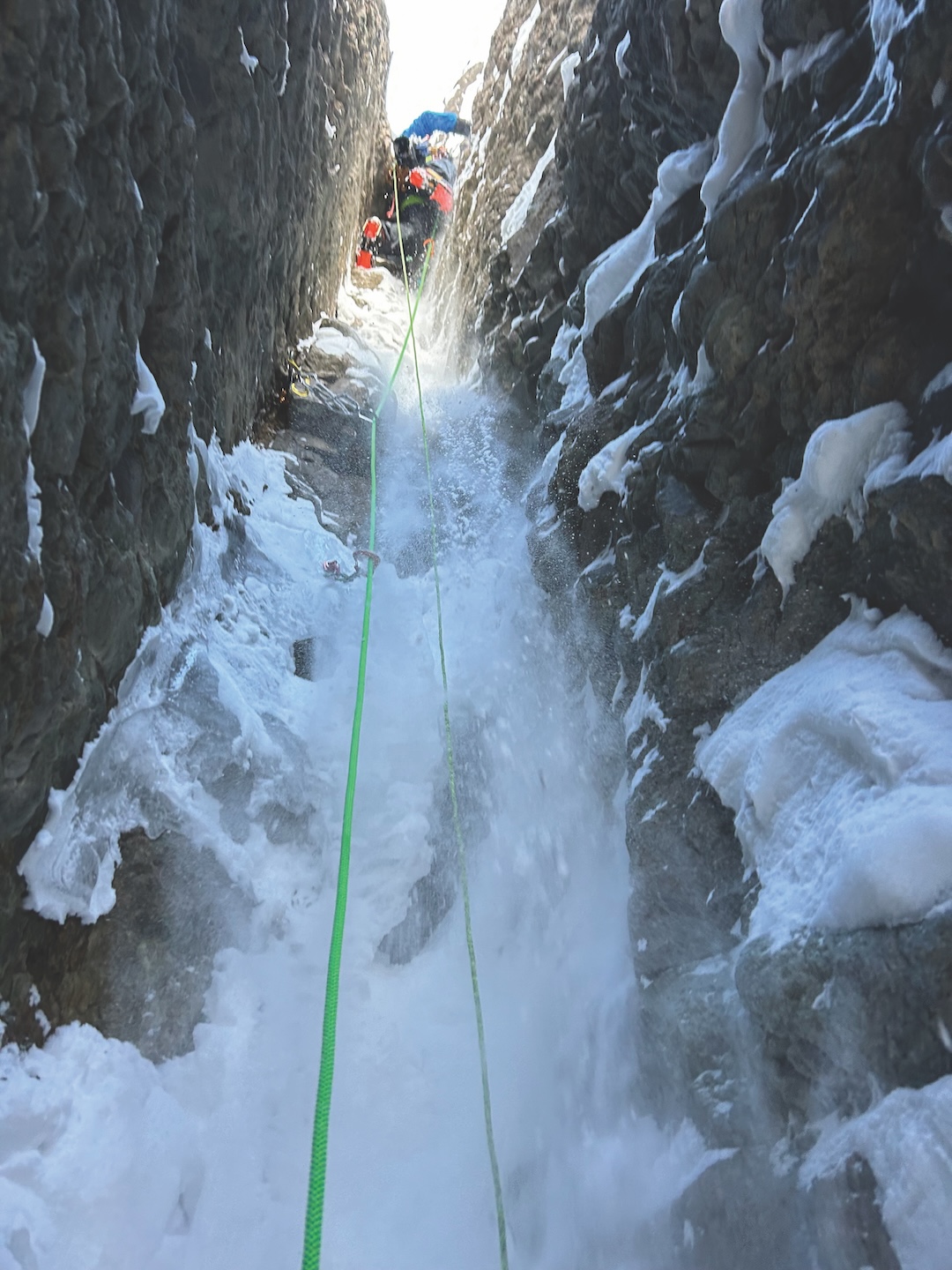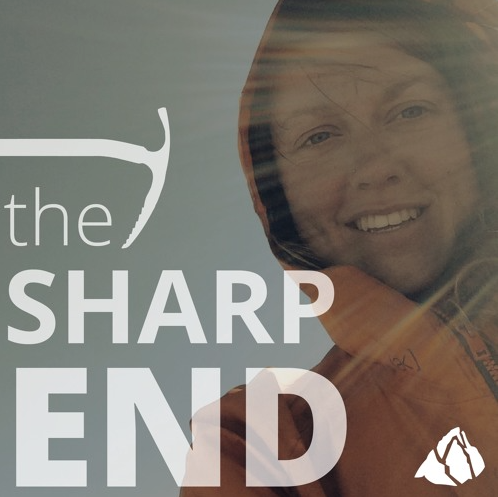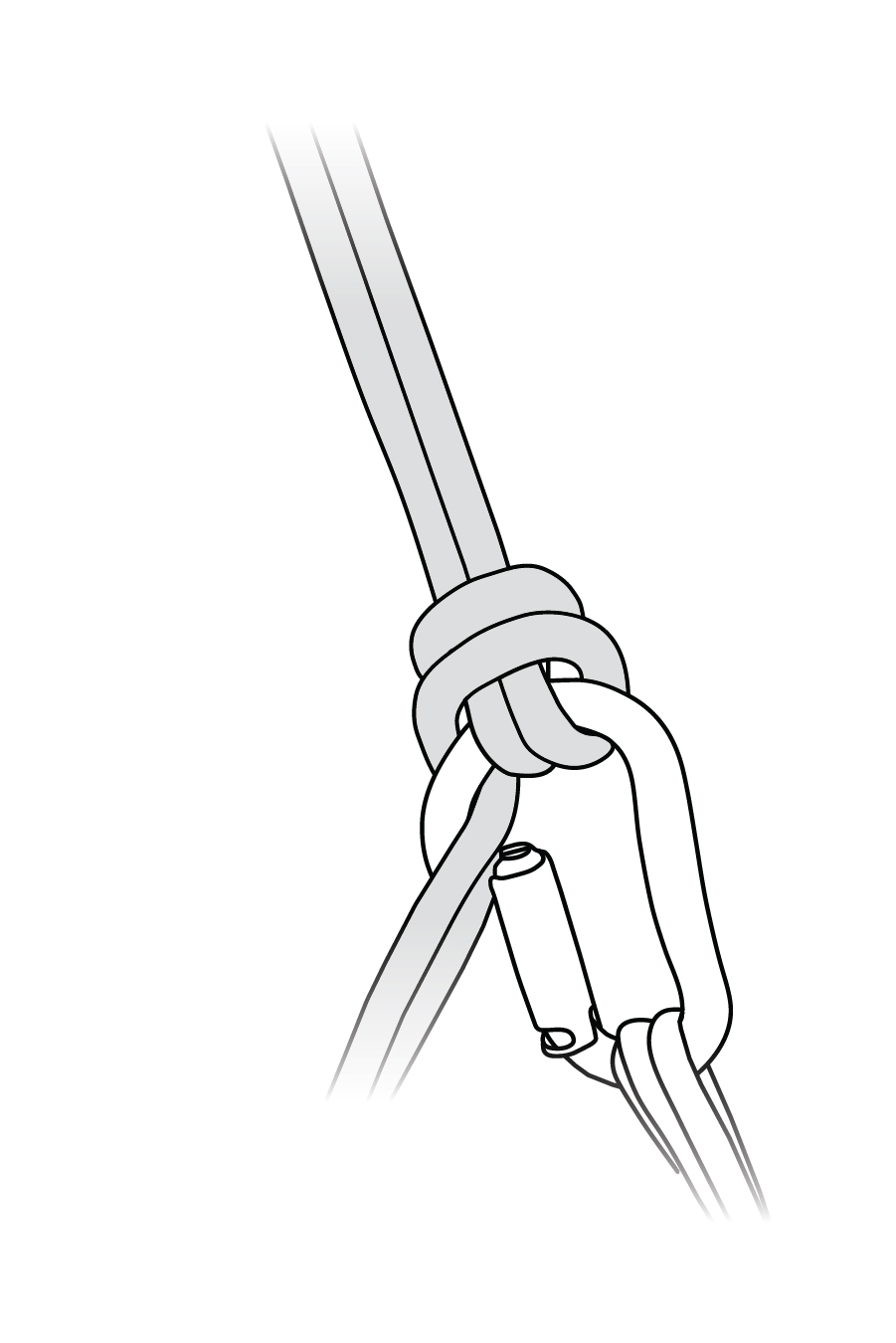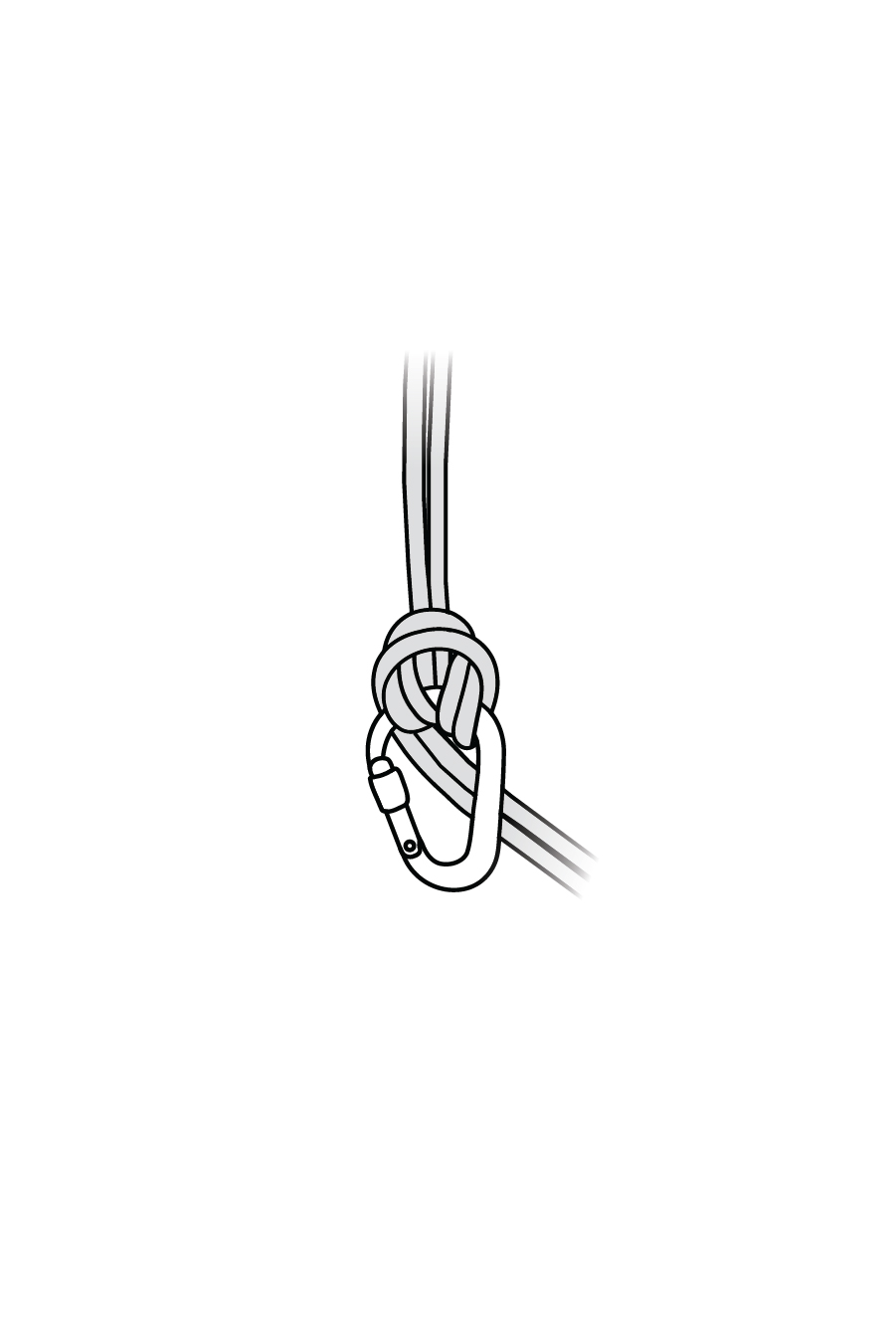Rappel Failure — Munter Hitch Unscrewed a Locking Carabiner
Colorado, Ouray, Camp Bird Road

On December 10, Jim Clarke (57) and I, Nathan Chaszeyka (45), climbed Bird Brain Boulevard (7 pitches, WI5 M5). While chimneying on pitch six, my belay device came unclipped from my harness. Jim and I finished around 4:45 p.m. It was getting dark. We decided to descend via The Ribbon, which is to the climber’s left of Bird Brain. We chose it because there was a likelihood of rope snags on the alternative descent. Our assessment of avalanche danger on the rappels was acceptably low.
In lieu of my lost belay device, the best choices came down to using a carabiner brake or Munter hitch. We discussed this decision. I’d used the Munter many times to rappel, particularly on skinny lines while ski mountaineering. On Bird Brain we had a single strand plus a tagline, and I was concerned about using the unaccustomed carabiner brake system, especially in the dark. The plan was to use a Munter on a large HMS-style locking carabiner. Jim would provide a fireman’s belay from below. We decided not to use a prusik backup to allow braking with the parallel strands and avoid introducing twists that would increase the chance of our ropes snagging.
The first rappel went well. Fifty feet into the second, the ropes unclipped themselves from the carabiner. This sent me on an 80-foot free fall down vertical and off-vertical terrain. I thought, “I’m going to die,” and my brain screamed back, “DIE FIGHTING!” Because I hadn’t released the brake strand, I was able to wrap my arm in the rope and arrest my fall. I stopped just above my partner. There was about 20 or 30 feet left before the end of the rope.
I secured myself with a prusik and reattached my Munter. My headlamp was broken during the fall and dangled by a couple of wires. This meant I no longer had hands-free lighting and would need to point the light by hand. This would become time-consuming and frustrating.
Self-assessment revealed that my left ankle was unstable and crunched when weighted. My right ankle/foot was in excruciating pain. There were no immediate indications of injury to other areas. Jim and I talked about a plan. We agreed we needed help but also needed to continue down the rappels, as a technical rescue would take a long time. To get down, he would need to lower me and follow on rappel. The cold was our next big issue. We were wet from climbing, and the temperature was an estimated 7°F.
We were still over 1,000 feet above the ground. As I looked down, I was overwhelmed with fear. I was already quite cold before the accident: How bad were the cold injuries going to be? If our ropes got snagged, would we be stranded and freeze to death? The 911 operator seemed to not understand the situation—did they even activate SAR? I realized that the time for emotion was later and I would need to compartmentalize fear and pain in order to focus on the business at hand. The last thing I wanted was something bad to happen to Jim as a result of my accident.
For eight more rope lengths, Jim lowered me while I navigated with my broken headlamp. As he lowered, I would crawl on hands and knees down the ice and rock. I fought to block the pain and dysfunction in my body. At the anchors, I couldn’t use my feet for support. I was fully hanging, knees painfully digging into the snow and rock with my body hanging from slings. The hypothermia set in fairly fast. I was shivering violently and found myself getting tired. My eyes would get heavy, but I knew if I allowed myself to sleep, the outcome could be very bad. I repeated the mantra “die fighting” every time I wanted to rest my head against the ice.
During the final lower, I saw two climbers from Ouray SAR below me and then reached the top of the snow ramp below the first pitch of The Ribbon. Ouray SAR put me on a tether as I crawled on hands and knees to a waiting litter. SAR smoothly lowered me down to the creek and then raised me up the other side of the gulch. They transferred me to an ambulance, and eventually I reached a hospital in Montrose. I can never express enough gratitude for the men and women who showed up in that time of need. It’s really important to give thanks to my partner. He was truly there when it mattered.
On the right leg, I broke my calcaneus, sprained the ankle, and damaged the nerve below the knee. On my left leg, I ruptured ligaments, had a significant ankle joint effusion, and partially tore the hamstring. I also partially tore my right bicep and have a left shoulder labrum tear. I’m healing well, all things considered.
ANALYSIS
During the second rappel, I was stepping over a bulge and I remember twisting my body to the right to see over my shoulder and find my feet in the dark. As I did this, the Munter hitch crept leftward toward the carabiner gate (see figure A on facing page). The rope rolled over the gate (unscrewing it in the process), popped it open, and undid itself from the carabiner. During my convalescence, I’ve been able to replicate this failure.
A different improvised rappel could have been used, but they all come with their own risks. If I use a Munter to rappel again, I’ll use a twin-gate locking carabiner or an autolocking carabiner. I’ve already switched some important carabiners to twin gates or autolockers. (Source: Nathan Chaszeyka.)
*Editor’s Note: See Figure B in the image gallery below for an effective Munter hitch rappel. For details, Google “no twist munter hitch.”



